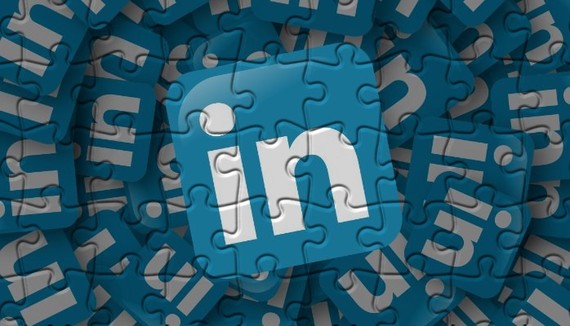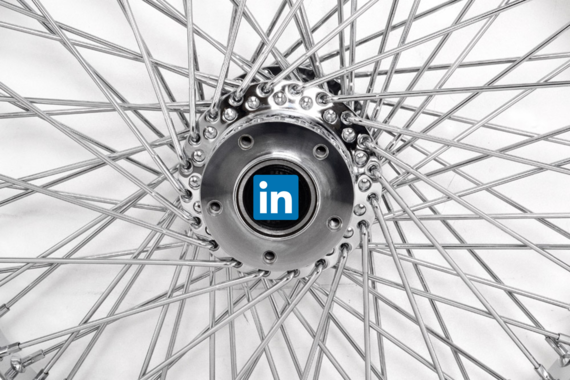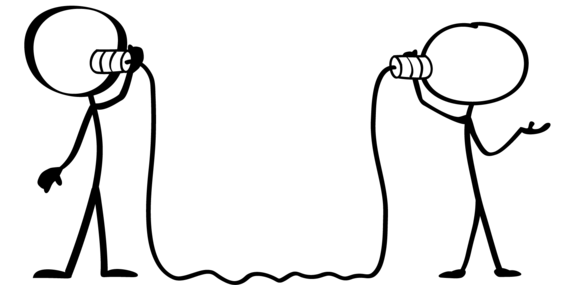
Dubbed as "the largest professional network in the world," and rightfully so, LinkedIn is an ever-expanding, interactive social medium that serves its constituents in a variety of ways. In order to be successful in using LinkedIn, one must break it down to its molecular components--that is, the thoughts and actions that drive positive results. Once you understand the function of LinkedIn, its purpose will come into focus.
We humans have a tendency to overthink everything. When it comes to engaging on social platforms, especially for business, it is easy to get bogged down in the minutiae and make things more complex than they have to be. For many, once the threshold of patience is reached, they see only chaos, detach, and default to their more familiar patterns. Hey, a retreat to the comfort zone is always easier than facing challenge.
Whereas people bring their own professional agendas to LinkedIn, their overarching objective is to either complete a transaction or land a job. All that stuff in between (personal brand building, social networking, thought leadership development, etc.) is ancillary to the cause. Your brand, your network, and the leads you generate are all byproducts of the energy that you bring to the work.
LinkedIn is a technological wonder that enables professionals to adjust and manage the subtleties of a business exchange. Whereas the devil may be in the details, the big picture can be confusing. There are many users who are truly lost on LinkedIn, unable to navigate their way through the digital jungle. LinkedIn, too, has become a victim of persistent innovation, constantly shuffling the deck, and upping the ante of knowledge required for basic use of the site.
How Does LinkedIn Really Work?
There is no textbook or cookie-cutter methodology when it comes to the successful use of LinkedIn. Yes, best practices have emerged. Professional etiquette must be observed at all times. Whereas there are formalities and conventions governing conduct on LinkedIn, much is improvised. As you pick up on the rudiments, you will reach a point where casual activity becomes strategy, and view LinkedIn as means to an end.
There are three primary activities performed on the site. They are: 1). Marketing, 2). Connecting, and 3). Learning. You do not carry out these activities one before the other; rather they are done simultaneously and systematically. By observing your environment and clearly stating the benefits of collaborating with you, you shape perceptions of potential clients, and increase your likelihood of connecting with the right professionals for the right reasons at the right time.
To support the work you will perform, LinkedIn provides you with a profile page, an enclosure for your network, and an interactive space that includes the home page, a group platform, a private messaging system, and a news aggregation service (Pulse). Economic opportunities materialize through the manner in which you configure your LinkedIn profile, interact with others, and transition online conversations offline. Without a giving mindset, a strong self-belief, and the commitment to excellence, it is impossible to extract any benefit. On LinkedIn, you truly reap what you sow.
Your LinkedIn Profile is a Digital Marketing Hub
Social networking sites are mapped in similar ways and share many common characteristics. There is a central core, a nucleus, called a profile, which serves as a primary access point, and on which one's professional history (both past and present) and activities carried out on the site are specially formatted and warehoused. The profile on LinkedIn just happens to be the most expansive of these page types, a living, breathing document that allows for as much (or as little) content as one wishes to provide. 
It is at your LinkedIn profile where all roads meet, and the information you generate is distributed and diverted. Inroads to the page are established through a primary website or landing page, a link in an email signature block, a business card, and word of mouth. Reciprocally, outbound links can draw visitors to your pertinent Internet sites. On this page, you position yourself for your desired outcome (e.g., client acquisition, product sales, a job offer, etc.), and create the business case for yourself.
The purpose of your LinkedIn profile is to convey your professional value in the most compelling manner possible. It is engineered to sell you when you are not present to sell yourself. What you provide in your profile defines you in the business universe at any given moment. You must decide on the narrative for your "brand story" and help viewers to your page gain clarity on your business role and what you do. Your credibility is validated through written recommendations by those who have witnessed you at your professional best.
LinkedIn is a Relationship Accelerant
Trusted relationships are the lifeblood of business. Building them takes time and energy. On LinkedIn, as in the real world, you strive to assemble a network of professionals that can support you, and that you can support. There are professionals that you need to meet and those that you want to meet. The site imposes a seemingly magical time-lapse on bringing these people into proximity, a long and arduous process in pre-LinkedIn days. However, this dynamic of forming online business relationships can be a stretch for some folks, who feel that eye contact and a handshake are mandatory for cementing the deal.
Building a directory of "first-degree connections" is at the heart of the LinkedIn process. These are the people who are on the journey with you, those you may see every day on your device, yet never meet in person. Some have a history with you; others connect with for seemingly no reason whatsoever. Know that you have total autonomy in assembling this network. You choose who you wish to invite, and whether to accept or ignore the invitations from others. Once a connection is made, the possibility to collaborate on a meaningful level emerges.
I frequently refer to the LinkedIn network as the "human chain to the dream gig."
The links are people to whom we assign various tags that denote relevance to us--clients, prospects, decision makers, connectors, influencers, mentors, and so forth. Some connections will have greater economic value to you than others; your role is to discern which people will be most instrumental in helping you achieve your desired outcome. These are the relationships you nourish.
LinkedIn is Just People Talkin'
LinkedIn, pure and simple, is a communication vessel, a conduit for a message. It is unique in that it is both a two-way and a broadcast platform. The interactive space encompasses the home page, the LinkedIn groups, a dedicated email server, and a publishing platform through which you can market original content. Every maneuver you carry out in these forums ought to draw attention to your LinkedIn profile and increase your likelihood of making quality connections. 
Successful use of LinkedIn inevitably comes down to effective outreach, timely response, and managing the conversations that ensue.
As with any mode of communication, there is a source and a receiver. The extent to which a message is received and acted upon varies according to timing, focus, and perceived value. Communication on LinkedIn falls into one or more of four (4) different lines. They are:
1). Individual-to-individual (e.g., invitation to connect, private message)
2). Individual-to-community (e.g., LinkedIn status update, long-form post, like-comment-share, contribution to a LinkedIn group discussion)
3). Community-to-individual (e.g., company update, LinkedIn group announcement)
4). Community-to-community (e.g., company update, LinkedIn group announcement)
The lay of the LinkedIn land is crowded. There is a mind-numbing quantity of information moving swiftly and constantly across the site that, as networks build, becomes impossible to process and track in real-time. The overwhelm can produce a sense of alienation or anxiety in many users, causing them to shut down. Understand that, through all this digital posturing, all that people are trying to do is find their voice and make good things happen.
A Parting Thought
LinkedIn should not be an exercise in futility. It should expand your horizons, add to your knowledge base about the businesspeople and companies around you, and empower you with insight to do your work better. Each login ought to bring you one step closer to a professional goal and to the people who can help you achieve it.
